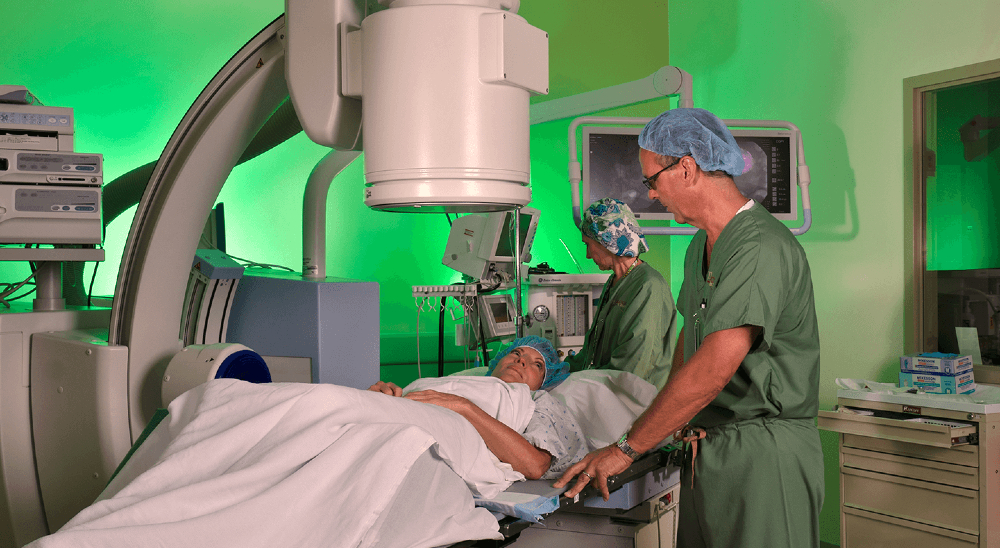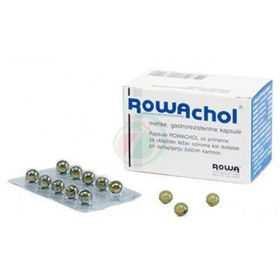Žolčnik je majhen, hruškasto oblikovan organ, ki leži pod jetri. V njem se skladišči žolč, zelenkastorumeni prebavni sok, ki ga izdelujejo jetra, dokler ga prebavila ne potrebujejo. Žolč sestavljajo žolčne soli, elektroliti, bilirubin, holesterol in druge maščobe (lipidi).
ŽOLČNI KAMNI in Nevarna Posledica: Splošno | Simptomi | Diagnoza | Redke bolezni žolčnika | Zdravljenje | Žolčni kamni v žolčniku | Akutni holecistitis | Kronični holecistitis | Tumorji žolčevodov | Vprašanja in odgovori | Viri/reference
Žolčni kamni so trde, kamenčke podobne tvorbe, ki nastanejo v žolčniku, majhnem organu, ki shranjuje žolč. Ta težava je pogosta in se lahko pojavi pri ljudeh vseh starosti, vendar je pogostejša pri ženskah in starejših osebah. Žolčni kamni se oblikujejo, ko pride do neravnovesja v sestavi žolča, kar lahko povzroči strjevanje holesterola ali bilirubina.
Žolč zvečuje topnost holesterola, maščob in vitaminov v mastnih vrstah hrane, zato jih lahko telo bolje absorbira. Žolčne soli vzpodbujajo debelo črevo k izločanju vode in drugih soli, kar pripomore k pomikanju črevesne vsebine po debelem črevesu in ven iz telesa.
Bilirubin, odpadni produkt, ki ga sestavljajo ostanki izrabljenih rdečih krvničk, se izloča v žolču. V žolč se izločajo tudi razgradni produkti zdravil in odpadne snovi, ki so jih predelala jetra.
V tem članku bomo raziskali vzroke za nastanek žolčnih kamnov, njihove simptome ter možnosti zdravljenja in preprečevanja. Razumevanje te težave je ključno za pravočasno ukrepanje in ohranjanje zdravja prebavil.
Slika: Žolčni kamni so skupki kristalov v žolčniku ali žolčevodih.
.jpg)
Žolč se steka iz tankih zbiralnih vodov znotraj jeter v levi in desni jetrni žolčevod, nato v skupni jetrni žolčevod, od tam pa v večji skupni žolčevod. Približno polovica žolča, izločenega med obroki, teče neposredno skozi skupni žolčevod v tanko črevo.
Druga polovica iz skupnega žolčevoda naredi ovinek skozi žolčnikov žolčevod in v žolčnik, kjer se žolč shrani. V žolčniku se do 90 odstotkov vode iz žolča absorbira v kri. V žolčniku ostane le koncentrirana raztopina žolčnih soli, žolčnih maščob in natrija.
Ko hrana vstopi v tanko črevo, zaporedje hormonskih in živčnih signalov sproži skrčenje žolčnika, hkrati se odpre sfinkter (Oddijev sfinkter). Zdaj žolč teče iz žolčnika v tanko črevo, se zmeša s hrano, ki se prebavlja, in opravlja svoje prebavne funkcije.
Velik del žolčnikove zaloge žolčnih soli se sprosti v tanko črevo in okrog 90 odstotkov žolčnih soli se spet absorbira v kri skozi steno spodnjega dela tankega črevesa. Jetra nato ek-strahirajo žolčne soli iz krvi in jih spet izločijo nazaj v žolč.
Žolčne soli v telesu tako zakrožijo 10-krat do 12-krat na dan. Vsakokrat majhna količina žolčnih soli prispe v debelo črevo, kjer jih razgradijo bakterije. Nekaj žolčnih soli se v debelem črevesu reabsorbira; preostale se izločijo z blatom.
Video vsebina: Kako naravno stopimo žolčne kamne?

Poglavitna sestavina večine žolčnih kamnov je holesterol, nekatere pa sestavljajo kalcijeve soli. V žolču je veliko holesterola, ki navadno ostane tekoč. Če žolč postane prenasičen s holesterolom, pa lahko holesterol postane netopen in se obori iz žolča.
Večina žolčnih kamnov nastane v žolčniku. Večina žolčnih kamnov v žolčevodih prispe tja iz žolčnika. Kamni lahko nastanejo v žolčevodu, kadar žolč zastaja, ker je kak vod nenormalno zožen, lahko pa po odstranitvi žolčnika.
Žolčni kamni v žolčevodih lahko povzročijo težko ali smrtno nevarno okužbo žolčevodov (holangiitis), trebušne slinavke (pankreatitis) ali jeter. Kadar pride do zapore žolčevodnega sistema, se lahko bakterije razmnožijo in hitro zasidrajo okužbo v vodih. Bakterije se lahko razširijo v kri in povzročajo okužbe drugod po telesu.
Simptomi
Žolčni kamni večinoma dolgo časa ne povzročajo simptomov, če jih sploh kdaj začnejo povzročati, posebno še, če ostanejo v žolčniku. Redko pa se zgodi, da veliki žolčni kamni postopoma razžrejo steno žolčnika in prispejo v tanko ali debelo črevo, kjer lahko povzročijo zaporo črevesa; to se imenuje ileus zaradi žolčnega kamna. Veliko pogosteje žolčni kamni prehajajo iz žolčnika v žolčevode. Lahko potujejo skoznje v tanko črevo, ne da bi delali težave, ali pa ostanejo v vodih, ne da bi povzročili zaporo odtekanja žolča ali kake simptome.
Kadar žolčni kamni delno ali prehodno zamašijo žolčevod, se pri bolniku pojavi bolečina. Bolečina rada prihaja v napadih; imenujemo jo kolika. Značilno je, da se ta bolečina počasi dvigne do platoja in se nato postopoma zmanjša. Bolečina je lahko ostra in se pojavlja v presledkih - traja lahko tudi več ur. Lokacija bolečine je različna. Najpogosteje boli v desnem zgornjem predelu trebuha, ki je lahko tudi občutljiv.
Slika: Če se razvije okužba z zaporo, ima bolnik vročino, mrzlico in zlatenico.

Bolečina se lahko razširi v desno lopatico. Pogosto ima bolnik slabost in bruha; če se razvije okužba z zaporo, ima bolnik vročino, mrzlico in zlatenico. Navadno je zapora začasna in se ne razvije v okužbo. Bolečine, ki jo povzroči zapora voda, včasih ni možno razlikovati od bolečine, ki jo povzroči zapora žolčnika. Trdovratna zapora, ki zamaši žolčnikov žolčevod, povzroči vnetje žolčnika (akutni holecistitis).
Žolčni kamni, ki zamašijo pankreasov vod, povzročijo vnetje trebušne slinavke (pankreatitis), pa tudi bolečino, zlatenico in celo okužbo. Včasih se intermitentna bolečina vrne po odstranitvi žolčnika; tako bolečino utegnejo povzročati žolčni kamni v skupnem žolčevodu.
Simptome prebavnih težav in neprenašanja mastne hrane pogosto po krivem pripisujejo žolčnim kamnom. Enako verjetno je, da ima človek, ki se mu spahuje, ima napihnjen trebuh, občutek polnosti in slabost, ulkusno bolezen ali prebavne težave ali žolčne kamne. Bolečina v zgornjem desnem predelu trebuha, ki se pojavlja po uživanju mastne hrane, je lahko posledica žolčnih kamnov. Prebavne težave po obrokih pa so pcjgoste in le redko pomenijo žolčne kamne.
Diagnoza
Najboljša metoda za ugotavljanje žolčnih kamnov v žolčniku je pregled z ultrazvokom. Učinkovita je tudi holecistografija. Pri holecistografiji rentgenske slike pokažejo pot konhastne snovi, ki jo bolnik zaužije in ne prepušča rentgenskih žarkov, ko se izloči v žolč in shrani v žolčniku.
Če žolčnik ne deluje, se kontrastna snov ne bo pojavila v njem. Če žolčnik deluje, bo kontrastna snov na rentgenski sliki pokazala obris žolčnega kamna. S kombinacijo ultrazvoka in holecistografije lahko zdravnik prepozna kar 98 odstotkov žolčnih kamnov v žolčniku. Vendar lahko ti preiskavi dajeta lažno pozitivne rezultate pri redkih ljudeh, ki nimajo žolčnih kamnov.
Redke bolezni žolčnika
V sluznici žolčnika se lahko odlaga holesterol. Sloji holesterola so videti kot majhne rumene pege na rdečem ozadju (to imenujemo jagodasti žolčnik). Prej ali slej lahko v žolčniku nastanejo nerakave rašče (polipi). Ta bolezen utegne včasih povzročati bolečine, tako da je potrebna kirurška odstranitev žolčnika. Divertikuloza žolčnika, majhni, prstom podobni izrastki sluznice žolčnika, se lahko razvije pri staranju. Divertikuloza lahko povzroči vnetje, tako da je potrebna kirurška odstranitev žolčnika.
Slika: Divertikuloza lahko povzroči vnetje.
.jpg)
Kadar ima človek bolečine v trebuhu, zlatenico, mrzlico in vročino, je velika verjetnost, da ima žolčne kamne v žolčevodih. Rezultati krvnih preiskav navadno pokažejo vzorec nenormalne funkcije jeter, kar kaže na zaporo žolčevoda. Več preiskav lahko da dodatne informacije, ki so potrebne za postavitev trdne diagnoze. Mednje sodijo slikanje z ultrazvokom, računalniško tomografijo in različna kontrastna rentgenska slikanja, ki prikažejo žolčevode.B Ultrazvočno slikanje in slikanje s CT lahko pokažeta, ali je žolčevod razširjen, vendar so lahko vodi zamašeni, ne da bi bili razširjeni.
Rentgenske metode pomagajo odkriti zaporo in, če je ta prisotna, pokazati, ali jo povzroča žolčni kamen. Od položaja je odvisno, katero diagnostično rentgensko metodo uporabijo. Če je diagnoza precej gotova, veliko zdravnikov uporabi eno od rentgenskih metod, preden se odločijo za operacijo. Če je diagnoza negotova, utegne najprej priti na vrsto ultrazvočno slikanje.
Zdravljenje
Večina ljudi, ki ima »tihe« žolčne kamne v žolčniku (to so taki, ki ne povzročajo simptomov), ne potrebuje zdravljenja. Ljudje z občasnimi bolečinami se lahko poskusijo odreči uživanju mastne hrane ali ga zmanjšati. To utegne preprečiti ali zmanjšati število bolečinskih napadov.
Žolčni kamni v žolčniku
Če žolčni kamni v žolčniku povzročajo ponavljajoče se napade bolečine kljub spremembam prehrane, utegne zdravnik priporočiti odstranitev žolčnika (holecistektomija). Odstranitev žolčnika ne povzroči pomanjkljivosti prehrane in po operaciji niso potrebne nikakršne omejitve v prehrani. Eden do 5 ljudi na vsakih 1000, ki imajo to operacijo, umre. Med holecistektomijo lahko zdravnik razišče tudi možnost kamnov v žolčevodih.
Laparoskopsko holecistektomijo so uvedli leta 1990 in je v neverjetno kratkem času postavila kirurško prakso na glavo. Zdaj večino holecistektomij opravijo laparoskopsko. Pri laparoskopski holecistektomiji žolčnik odstranijo skozi cevke, ki jih uvedejo skozi majhne vreznine v trebušni steni.
Celoten postopek opravijo s pomočjo kamere (laparoskop), ki jo tudi namestijo v trebuh skozi vreznine. Laparoskopska holecistektomija je zmanjšala pooperativne težave, skrajšala ležalno dobo v bolnišnici in zmanjšala bolniške izostanke.
Video vsebina: Razumevanje žolčnih kamnov.

Med druge metode odstranjevanja žolčnih kamnov, ki so jih uvedli v zadnjih 10 letih, sodita raztapljanje z metiltertbutilnim etrom in drobitev z zvočnimi šokovnimi valovi (litotripsija). Pri starejši metodi zdravljenja so žolčne kamne raztapljali z dolgotrajnim zdravljenjem z žolčnimi kislinami (heno- in ursodeoksiholna kislina).
Žolčni kamni v žolčevodih Žolčni kamni v žolčevodih lahko delajo hude težave; zato jih je treba odstraniti bodisi s trebušno operacijo ali s postopkom, ki se imenuje endoskopska retrogradna holangiopankreatografija (ERCP). Pri ERCP uvedejo endoskop skozi usta, navzdol po požiralniku, skozi želodec in v tanko črevo. Skozi cevko v Oddijevem sfinktru vbrizgajo v žolčevod kontrastno snov, ki ne prepušča rentgenskih žarkov.
Pri postopku, ki se imenuje sfinkterotomija, mišični sfinkter odprejo toliko, da lahko žolčni kamni, ki so zapirali žolčevod, gredo skozenj v tanko črevo. ERCP in sfinkterotomija sta uspešni pri 90 odstotkih bolnikov.
Manj kot 4 ljudje od 1000 umrejo, pri 3 do 7 odstotkih bolnikov pa se razvijejo zapleti, zato sta ta postopka varnejša kot trebušna operacija. Med takojšnje zaplete sodijo krvavitev, vnetje trebušne slinavke (pankreatitis) in perforacija ali okužba žolčevodov. Pri 2 do 6 odstotkih ljudi se vodi spet skrčijo, žolčni kamni pa spet pojavijo. Žolčnih kamnov, ki ležijo le v žolčniku, z ERCP ni možno odstraniti.
Slika: Med metode odstranjevanja žolčnih kamnov spada tudi litotripsija.

Navadno je ERCP sama najboljša za starejše ljudi, ki imajo žolčne kamne v vodih in ki so jim žolčnik odstranili že prej. Pri teh ljudeh je uspešnost posega primerljiva z uspešnostjo trebušne operacije. Pri večini starejših ljudi, ki nikoli niso imeli težav z žolčnikom, ni treba odstraniti žolčnika, ker le okrog 5 odstotkov starejših ljudi dobi ponovne simptome žolčnih kamnov v žolčevodih.
Ljudem, mlajšim od 60 let, ki imajo težave zaradi kamnov v žolčevodu ali žolčniku, navadno elektivno odstranijo žolčnik, potem ko so jim prej naredili ERCP in sfinkterotomijo. Sicer tvegajo, da bi se jim kdaj pozneje čez leta razvile akutne težave z žolčnikom.
Večino kamnov odstranijo iz žolčevodov med postopkom ERCP. Če žolčni kamni ostanejo v vodu, bodo pozneje pogosto odpotovali skozi trajno sfinkterotomijo. Morebitne preostale žolčne kamne lahko nato odstranijo z endoskopijo, preden odstranijo dren v žolčevodu, ki so ga vstavili med operacijo.
Akutni holecistitis
Akutni holecistitis je vnetje stene žolčnika, ki navadno nastane zaradi žolčnega kamna v žolčnikovem žolčevodu; žolčni kamen povzroči napad nenadne, izredno hude bolečine. Najmanj 95 odstotkov ljudi z akutnim vnetjem žolčnika ima žolčne kamne. Vnetje le redko lahko povzroči bakterijska okužba.
Akutno vnetje žolčnika brez žolčnih kamnov je resna bolezen. Rada se pojavi po poškodbah, operacijah, opeklinah, po vsem telesu razširjenih okužbah (sepsa) in zelo težkih boleznih, posebno pri bolnikih, ki so jih dolgo časa hranili intravensko.
Bolnik, ki navadno prej ni imel nikakršnih znakov bolezni žolčnika, nenadoma doživi nenadno, skrajno hudo bolečino v zgornjem delu trebuha. Navadno je bolezen zelo težka in lahko pripelje do gangrene ali perforacije žolčnika. Oboleli žolčnik je treba odstraniti s takojšnjo operacijo.
Simptomi
Prvi znak vnetja žolčnika je bolečina, navadno v zgornjem desnem predelu trebuha. Bolečina utegne postati hujša, če bolnik globoko diha, in se pogosto razširi v spodnji del desne lopatice. Bolečina lahko postane zelo huda; navadno se pojavita slabost in bruhanje.
Bolnik značilno začuti ostro bolečino, ko zdravnik pritisne na zgornji desni del trebuha. V nekaj urah trebušne mišice na desni strani postanejo toge. V začetku ima lahko bolnik le nekoliko povišano telesno temperaturo, ki pa se sčasoma rada močneje zviša.
Video vsebina: Zdravljenje akutnega holecistitisa.

Napad žolčnika se ponavadi umiri v 2 ali 3 dneh in popolnoma izgine v enem tednu. Če se to ne zgodi, utegne imeti bolnik resne zaplete. Visoka vročina, drgetanje, znatno povečanje koncentracije belih krvničk in prekinitev normalnega krčenja črevesa (peristaltika), ki se imenuje ileus, lahko pomenijo nastanek ognojka, gangreno ali perforacijo žolčnika. Pri teh zapletih je potrebna takojšnja operacija.
Lahko pride še do drugih zapletov. Napad žolčnika, ki ga spremlja zlatenica ali zastajanje žolča v jetrih, kaže na možnost, da je skupni žolčevod delno zamašen zaradi kamna ali vnetja. Če krvne preiskave pokažejo povečano aktivnost encima amilaze, je možno, da ima bolnik vnetje trebušne slinavke (pankreatitis), ki ga je povzročila zapora pankreasove-ga voda zaradi žolčnega kamna.
Diagnoza
Zdravniki postavijo diagnozo akutnega vnetja žolčnika na podlagi bolnikovih simptomov in rezultatov nekaterih preiskav. Slikanja z ultrazvokom lahko pogosto pomagajo potrditi prisotnost žolčnih kamnov v žolčniku in lahko pokažejo zadebelitev stene žolčnika. Najnatančnejšo diagnozo da hepatobiliarna scintigrafija (slikanje po intravenskem vbrizganju radioaktivne snovi). Pri tej preiskavi slikajo jetra, žolčevode, žolčnik in zgornji del tankega črevesa.
Zdravljenje
Bolnik z akutnim vnetjem žolčnika je navadno sprejet v bolnišnico, prejme intravensko tekočine in ne sme jesti ali piti. Zdravnik mu lahko uvede skozi nos v želodec cevko, tako da s sukcijo vzdržujejo želodec prazen; s tem se zmanjša draženje žolčnika. Navadno takoj po tistem, ko posumijo na akutno vnetje žolčnika, dajo antibiotike.
Če je diagnoza zanesljiva in nevarnost operacije majhna, žolčnik navadno v prvem dnevu ali prvih dveh dneh po začetku bolezni odstranijo. Če pa ima bolnik še drugo bolezen, ki povečuje nevarnost operacije, operacijo preložijo za čas, ko zdravijo tisto bolezen. Če se napad umiri, lahko žolčnik odstranijo pozneje, najbolje čez 6 tednov ali še pozneje. Če posumijo na zaplete, npr. na nastanek ognojka, gangreno ali perforacijo žolčnika, je na splošno potrebna takojšnja operacija.
Slika: Simptomi disfunkcije Oddijevega sfinktra so lahko blagi ali hudi.
.jpg)
Majhen odstotek ljudi ima nove ali ponavljajoče se napade bolečine, ki jih opisujejo kot napade žolčnika, čeprav nimajo žolčnika. Vzrok teh napadov ni znan, lahko pa bi nastajali zaradi nenormalnega delovanja Oddijevega sfinktra; njegovo odpiranje nadzoruje sproščanje žolča v tanko črevo. Menijo, da bolečina nastane zaradi zvišanega tlaka v vodih, ki ga povzroča upor proti toku žolča ali izločkov trebušne slinavke.
Pri nekaterih ljudeh lahko povzročajo bolečine majhni žolčni kamni, ki so ostali po operaciji. Zdravnik lahko z endoskopom (pregledovalna cevka s kirurškimi nastavki) razširi Oddijev sfinkter. Ta postopek navadno olajša simptome pri ljudeh, ki imajo prepoznavno nenormalnost sfinktra, ne bo pa pomagal tistim, ki imajo samo bolečine.
Kronični holecistitis
Kronični holecistitis je dolgotrajno vnetje žolčnika, za katero so značilni ponavljajoči se napadi hude, ostre bolečine v trebuhu. Kronično vnet žolčnik ima debelo steno, je skrčen in majhen. Steno sestavlja predvsem vlaknato vezivo.
Sluznica na notranji strani žolčnika lahko kaže razjede in brazgotine, v žolčniku pa so drobir ali žolčni kamni, ki pogosto mašijo žolčnikov žoičevod. To stanje je verjetno posledica ponavljajočih se okvar in zaporednih okrevanj po prejšnjih napadih akutnega vnetja, pogosto zaradi žolčnih kamnov.
Tumorji žolčevodov
Če ne štejemo žolčnih kamnov, je najpogostejši vzrok zapore žolčnih vodov rak. Rak se večinoma začne v glavi trebušne slinavke, skozi katero teče skupni žoičevod. Redkeje rak izvira iz žolčnega sistema samega na stičišču skupnega žolčevoda in pankreasovega voda, v žolčniku ali v jetrih.
Veliko redkeje lahko povzroči zaporo žolčevodov rak, ki se je razširil (metastaziral) od drugod v telesu, ali pa lahko žolčevode stisnejo bezgavke, ki jih je napadel limfom. Zaporo utegnejo povzročiti tudi nerakavi (benigni) tumorji v žolčevodih.
Simptomi in diagnoza
Simptomi zapore žolčevodov so zlatenica, občutek nelagodja v trebuhu, izguba teka, hujšanje in srbenje, navadno brez vročine in mrzlice. Simptomi se postopoma slabšajo. Diagnozo raka kot vzroka zapore postavijo s slikanjem z ultrazvokom ali računalniško tomografijo ali pa z direktno holangiografijo (rentgenskim kontrastnim slikanjem). Za potrditev diagnoze zdravnik naredi biopsijo.
Zdravljenje
Zdravljenje tumorjev žolčevodov je odvisno od vzroka in okoliščin. Operacija je najnepo-srednejši način za ugotavljanje vrste tumorja, za ugotavljanje, ali ga je moč odstraniti, in za zagotavljanje, da bo lahko žolč tekel okrog zapore. Najpogosteje raka ni možno povsem odstraniti, ta vrsta raka pa se tudi ne odziva dobro na obsevalno zdravljenje. Delno olajšanje simptomov utegne omogočiti kemoterapija.
Video vsebina: Žolčni kamni (holelitiaza).

Nekateri ljudje z zaporo žolčevodov zaradi raka imajo bolečine, zaradi bakterijske okužbe pa se kopiči gnoj. Če operacija ni možna, utegne zdravnik uvesti cevko za premostitev zožitve skozi upogljiv endoskop; s tem omogoči žolču in morebitnemu gnoju odtekanje okrog rakavega tumorja. Ta postopek ne samo olajša kopičenje žolča ali gnoja, temveč tudi pomaga obvladovati bolečine in olajša srbenje.
Vprašanja in odgovori
Kaj povzroča žolčne kamne?
Žolčni kamni nastanejo, ko se žolč, shranjen v žolčniku, strdi v kamnu podoben material. Preveč holesterola, žolčnih soli ali bilirubina (žolčnega pigmenta) lahko povzroči žolčne kamne[1].
Kakšni so lahko zapleti žolčnih kamnov?
Zapleti lahko vključujejo:
- zlatenica
- okužba žolčevodov (akutni holangitis)
- vnetje žolčnika (akutni holecistitis)
- akutni pankreatitis
- rak žolčnika
- ileus žolčnih kamno[2]
Kako zdravijo žolčne kamne?
Holecistektomija je operacija za odstranitev žolčnika. To je edina možnost zdravljenja simptomatskih žolčnih kamnov. Laparoskopska holecistektomija je najpogostejši poseg namesto tradicionalnega, odprtega postopka[3].
Ali žolčne kamne lahko dobijo tudi otroci?
Žolčni kamni so trdne usedline prebavne tekočine v žolčniku, majhnem organu, ki leži tik pod jetri. Čeprav je bolezen pogostejša pri odraslih, približno 2 odstotkom otrok diagnosticirajo žolčne kamne[4].
Ali so žolčni kamni boleči?
Bolečina običajno traja od nekaj minut do nekaj ur. Občasno lahko ljudem z bolečino v žolčnih kamnih postane slabo ali celo bruhajo. Bolečina pogosto sledi obroku in se lahko najpogosteje opazi zvečer[5].
Viri in reference
Veliki zdravstveni priročnik za domačo uporabo, Založba mladinska knjiga
- Gallstones - https://www.hopkinsmedicine.org
- Complications - https://www2.hse.ie
- Gallstone Disease Treatment - https://www.hopkinsmedicine.org
- Gallstones (Cholelithiasis) - https://www.childrenshospital.org
- Gallstones - https://gutscharity.org.uk



 Facebook
Facebook
 Instagram
Instagram
 info@moja-lekarna.com
info@moja-lekarna.com

